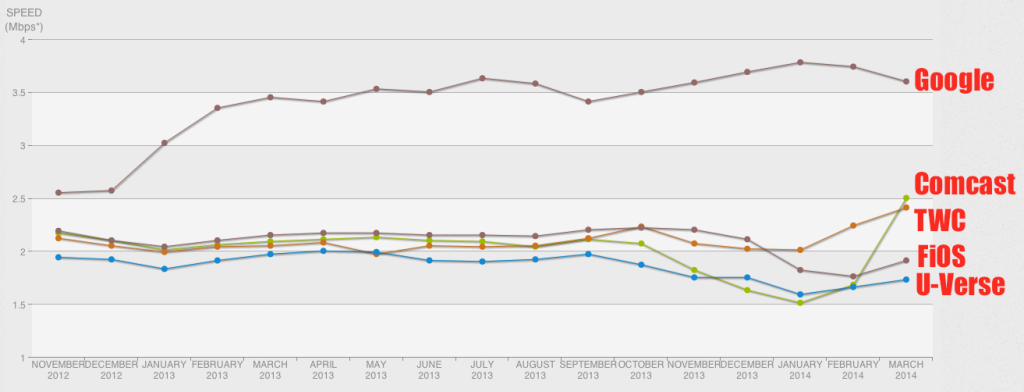Netflix Will Also Pay Verizon To End Streaming Bottleneck

The most recent Netflix downstream speed results show how badly FiOS and AT&T U-Verse speeds have declined in the last year.
A Verizon rep confirmed the deal to the Wall Street Journal last night without disclosing any specifics.
It’s believed that it’s similar to the arrangement Netflix made earlier this year with Comcast. In that deal Netflix pays Comcast some amount of money in exchange for being allowed to place some of its servers at third-party locations that have direct access to the Comcast network. This alleviates the bottlenecking that begun in mid-2013 when Comcast and other ISPs decided to only do the absolute minimum to deliver Netflix to end-users.
See, Netflix and other content companies that send out oodles of data generally contract out to bandwidth providers to carry their data downstream, but in order to reach the actual subscribers, Netflix still has to rely on ISPs like Comcast, Verizon, AT&T, etc. to cover the so-called “last mile” to the end-user.
When downstream data bottlenecks at the point where bandwidth providers and ISPs meet, the practice had generally been for the ISP to open up some more connections — known as peering ports — in order to ease the flow of traffic. It’s like when a supermarket gets busy and the manager temporarily opens up a couple other registers to keep the lines moving.
But the ISPs don’t have to do this, and so last year a number of them stopped doing it for content coming from Netflix’s bandwidth providers, leading to slower and slower speeds for some Netflix users, to the point where FiOS customers were seeing slower speeds than some standard DSL customers.
The ISPs argue that they should be paid for having to deal with all the extra downstream data. Netflix argues that the ISPs are getting paid, by the consumers they invoice every month and to whom they promise fast download speeds. Netflix also contends that the ISPs are doing no heavy lifting by merely delivering content over the last mile; that all of the important data transportation work is being done by its bandwidth providers.
Netflix and others had hoped that the FCC would deal with paid peering arrangements in the new proposal for net neutrality guidelines, but FCC Chair Tom Wheeler has not only made it clear that he doesn’t consider these deals to be a neutrality issue, but that he also thinks it’s perfectly okay for ISPs to demand a toll for improved access to end-users.
Want more consumer news? Visit our parent organization, Consumer Reports, for the latest on scams, recalls, and other consumer issues.

